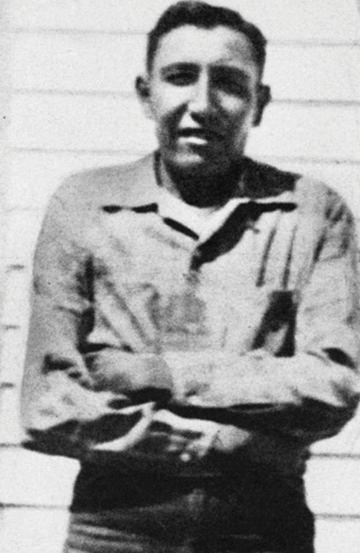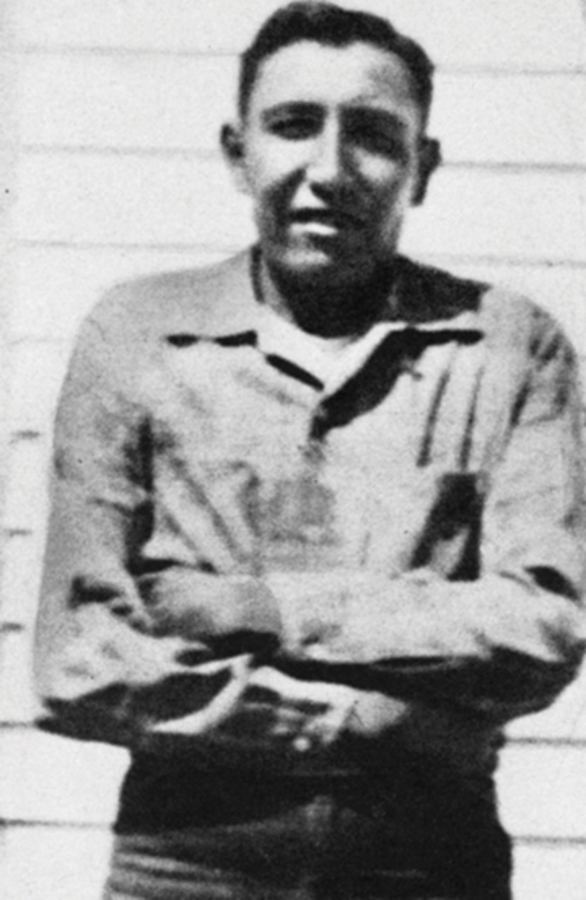Nationality American Indian Ethnicity Oglala Lakota | Name Raymond Thunder | |
 | ||
Born January 1, 1921 ( 1921-01-01 ) Kyle, South Dakota, United States Spouse(s) Dora Cutgrass (ex-wife) Parent(s) Jennie Yellow Thunder (mother)
Andrew Yellow Thunder (father) Relatives Chief American Horse (grandfather) Died February 1972, Gordon, Nebraska, United States | ||
Raymond Yellow Thunder (January 1, 1921 – February 13, 1972) was an Oglala Lakota, born in Kyle, South Dakota, on the Pine Ridge Indian Reservation.
Contents

He was killed in Gordon, Nebraska, after being attacked while intoxicated. His death became notable as an example of a racial assault, as he was killed by four white men who had bragged earlier that evening about beating an Indian.

The case provoked incorrect rumors that he was tortured and mutilated prior to his death, and members of the American Indian Movement went to Gordon in search of justice in the case. The prosecution of his killers aroused much controversy, as the two brothers convicted of manslaughter were given light sentences.
Early life and education
Yellow Thunder was one of seven children of Jennie and Andrew Yellow Thunder and the grandson of Chief American Horse. He was noted in his reservation school to be an average student, a good athlete, and the best artist in the school. He was gifted in taming horses, which allowed him to work as a ranch hand in his adult years.
Marriage and family
He married Dora Cutgrass when they were young. They divorced without children after his drinking became a problem.
Career
Yellow Thunder eventually pursued work in Gordon as a ranch hand. He developed alcoholism, tending to be a binge drinker. Like many other ranch hands, he worked hard during the week and drank on the weekends. Due to public drunkenness, he had numerous encounters with the Gordon police but they noted that the 51-year-old man was not violent during these episodes, but rather mellow. He would often ask for a cell at the police department so that he could sleep safely. As an employee, he was "so reliable that Harold Rucker, who employed Yellow Thunder for many years, was immediately alarmed when he wasn't at the appointed spot in Gordon where he picked him up to take him back to the ranch on Sunday evenings."
Death
On February 12, 1972, Yellow Thunder was walking around drunk in the streets of Gordon. The brothers Leslie and Melvin Hare, along with friends Bernard Lutter, and Robert Bayliss, found him in a used-car lot. Also under the influence of alcohol, the Hares and Bayliss assaulted Yellow Thunder. They had been heard earlier that night talking about "busting an Indian". They stripped Yellow Thunder of his pants and undergarments and shoved him into the trunk of their car. Jeanette Thompson was present, but did not participate in the assault or kidnapping.
The Hares, Lutter, and Bayliss took Yellow Thunder to the American Legion club. There, they shoved the half-naked Yellow Thunder into the hall, where patrons briefly gawked at the spectacle. Though offered help by employees of the club, Yellow Thunder rejected assistance and left the club alone.
Later that night, the Hares and group found Yellow Thunder again. Allegedly concerned with the cold weather and his lack of clothing, they kidnapped him, retrieved his clothing from the used-car lot where they had first attacked him, and allowed Yellow Thunder to leave at a laundromat. He went to the police station and asked for a cell to pass the night. The following day, February 13, 1972, Yellow Thunder was found by George Ghost Dog, an Oglala Lakota boy. Yellow Thunder told him, "I got beat up by some white guys", and Ghost Dog left him.
This was the last time Yellow Thunder was seen alive. It is believed that he took shelter in a car in the used-car lot and died a few days later of his injuries. This is where he was found eight days after Ghost Dog had seen him. The autopsy showed that he had died of subdural hematoma, caused by blunt trauma to his forehead above his right eye.
Prosecution
Leslie and Melvin Hare, Robert Bayliss, Bernard Lutter, and Jeanette Thompson were arrested as suspects for the death of Yellow Thunder, as numerous witnesses had seen them with the man before his death. The Hares, Bayliss, and Lutter were charged with manslaughter and false imprisonment. Thompson was also charged with false imprisonment. Lutter's charges of manslaughter were eventually dropped in exchange for testimony against the other defendants. All five defendants posted their bail. Thompson's charges were later dropped as the prosecution decided that she did not participate in the crimes.
Upon hearing rumors perpetuated by newspapers and suspicious Indians that Yellow Thunder had been forced to dance naked at the American Legion Club, tortured and castrated before being killed, members of the American Indian Movement entered the case to protest for justice. The AIM vowed to pursue justice and demonstrated in Gordon against the brutalization of Native Americans, with Yellow Thunder's death at the center of the demonstrations. The police conducted a second autopsy, which results dispelled the rumors of torture and mutilation.
Leslie and Melvin Hare were eventually convicted of manslaughter and sentenced to six years with a $500 fine, and two years with a $500 fine, respectively. Incensed by the meager sentences, the AIM started a protest against the decision. The AIM's involvement in the Yellow Thunder case contributed to its gaining members for a chapter at Pine Ridge Reservation, and led to its involvement in the Wounded Knee Incident, as well as gaining national media attention.
